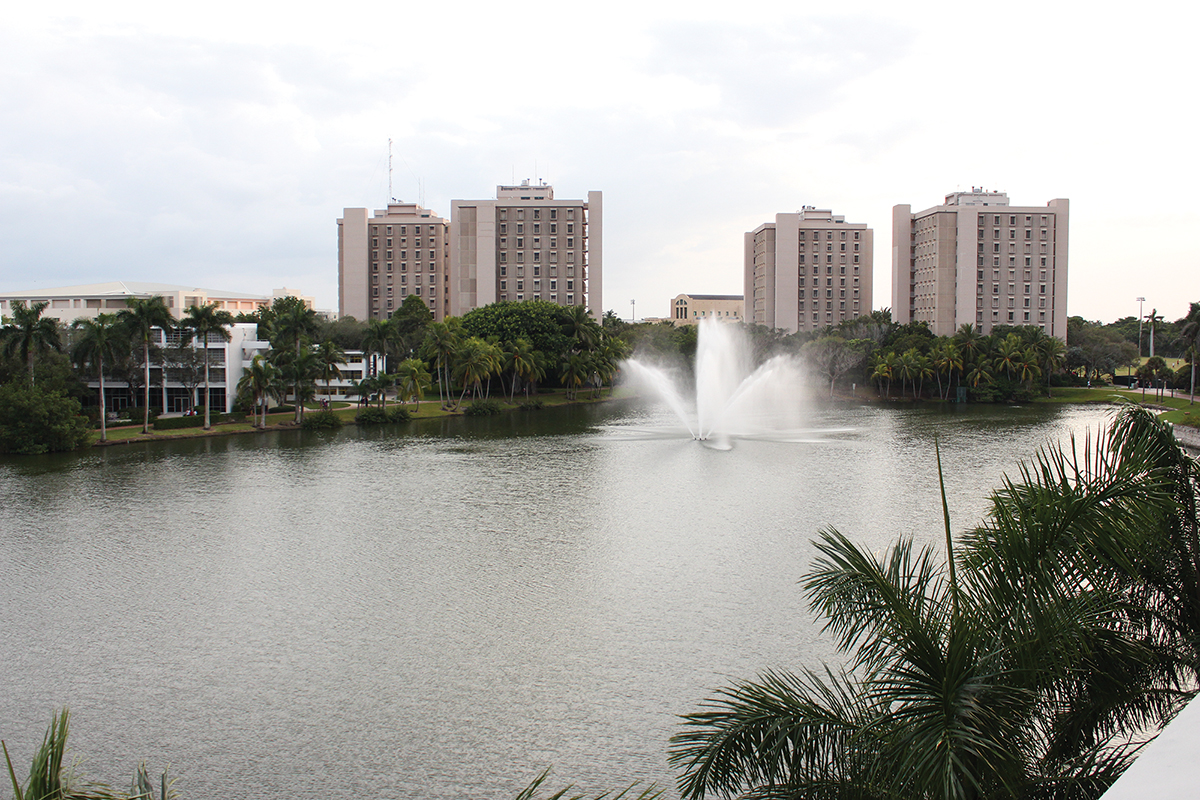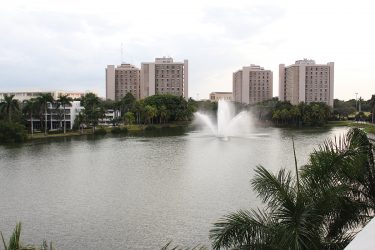

Lake Osceola is the centerpiece of University of Miami’s Coral Gables campus, with its free flowing fountain and assorted wildlife of ducks, egrets and barracudas. But every so often, its water turns brown and a pungent odor invades the surrounding air, making students wonder what exactly is going on underneath the serene surface.
“I have noticed that the lake sometimes looks murky, and sometimes it’s clear and even looks green,” said Naja Murphy, a freshman and marine science major.
Lake Osceola has been a part of campus since 1947, starting out as a canal connected to Biscayne Bay and other freshwater systems.
Professor Dan DiResta, senior lecturer in the Department of Biology, has been studying the lake since the 1990s and used to take students to test the lake’s salinity, nutrient levels and cloudiness.
“It’s one of the best things on campus,” DiResta said.
From endangered mangrove trees to the occasional manatee, the lake is home to a large and varied ecosystem that has remained healthy throughout the past couple of years. However, this wasn’t always the case.
“One of the things we found was that the lake was stratified with fresher water on the surface and saltier water towards the bottom,” DiResta said.
The brown coloration and pungent smell is part of the normal life cycle of the lake, according to DiResta. Given how shallow the lake is – its deepest point is eight feet – whenever there is a storm or any other disturbance of the water, the sediment at the bottom of the lake drifts upward, resulting in the cloudy, brown color.
Sediment isn’t the only thing picked up. Nutrients trapped at the bottom of the lake are released to the surface, resulting in large algal blooms. Algae can range from microscopic, unicellular organisms to pieces of kelp, and once they die off and settle to the bottom of the lake, bacteria sets in to break them down.
The result is the sour smell many students have been greeted with on their way to class. This also results in the death of fish as oxygen is used up by bacteria.
Since the installation of the fountain and oxygen bubblers in the water years ago, the lake has improved considerably according to DiResta.
The features work to keep the balance of salt and fresh water equal, helping the free movement of oxygen while still allowing the natural process of the sedimentation to take place. The number of deaths in fish has dropped considerably since their inclusion.
“I think the lake is functioning more as a natural system than it used to,” DiResta said.





